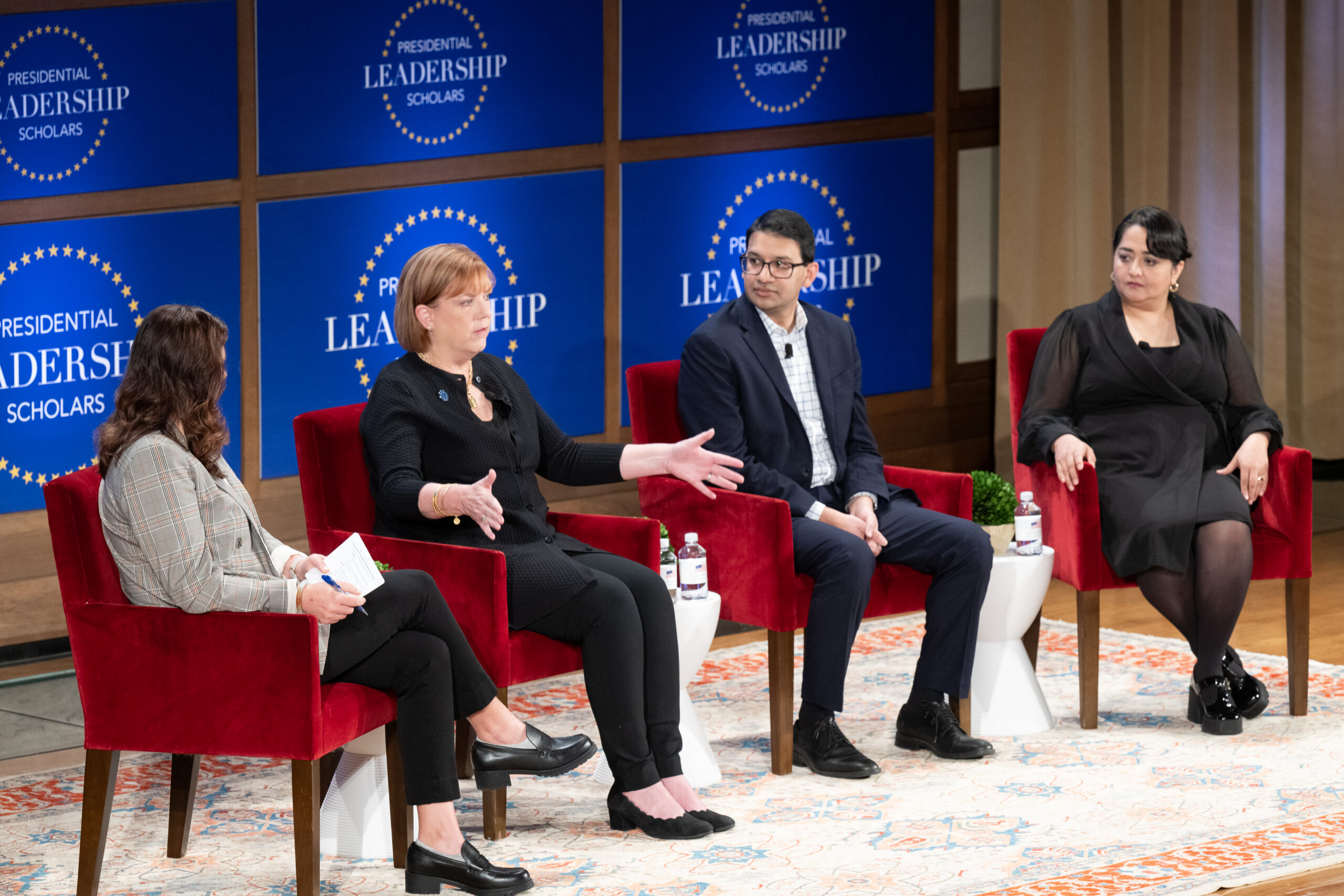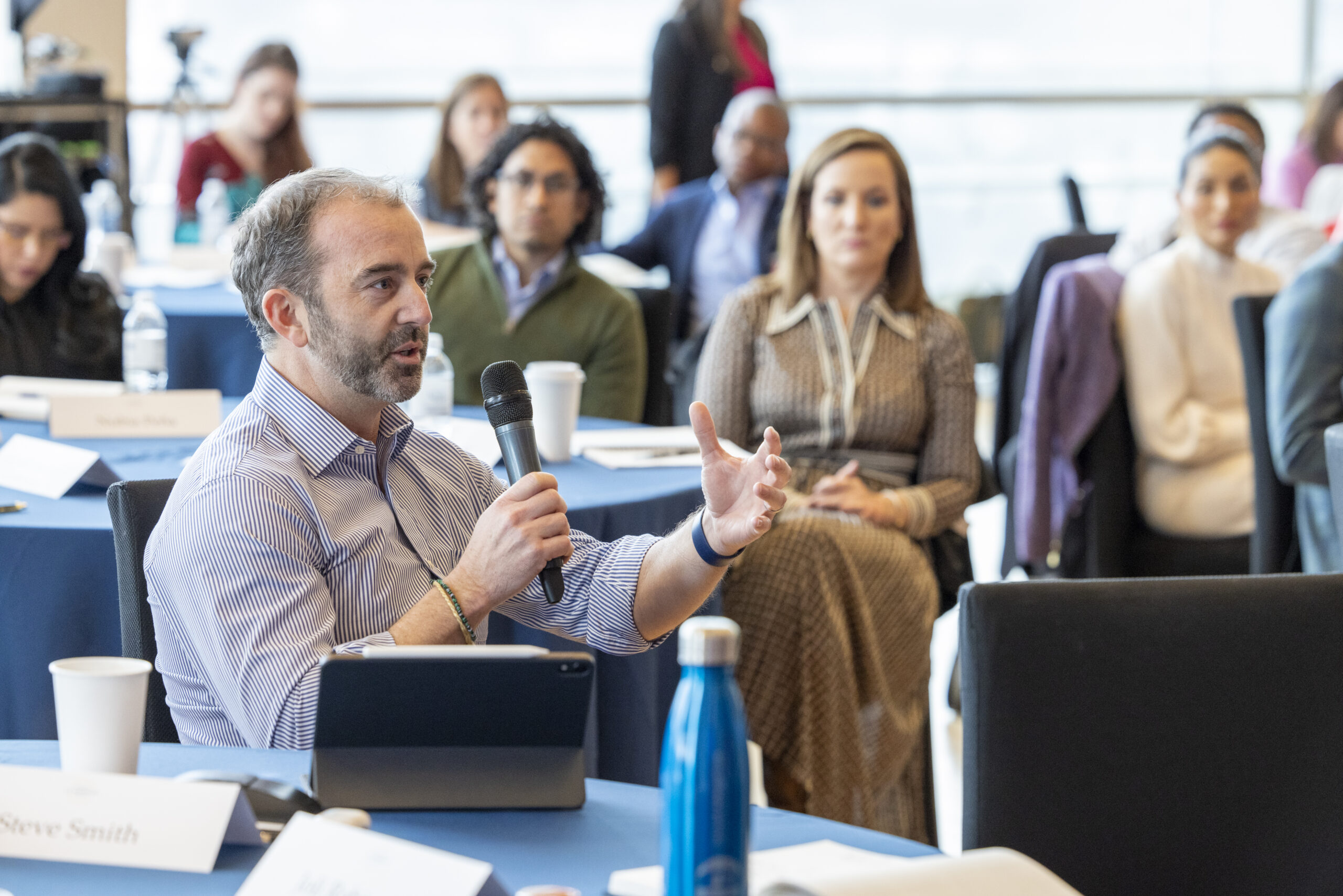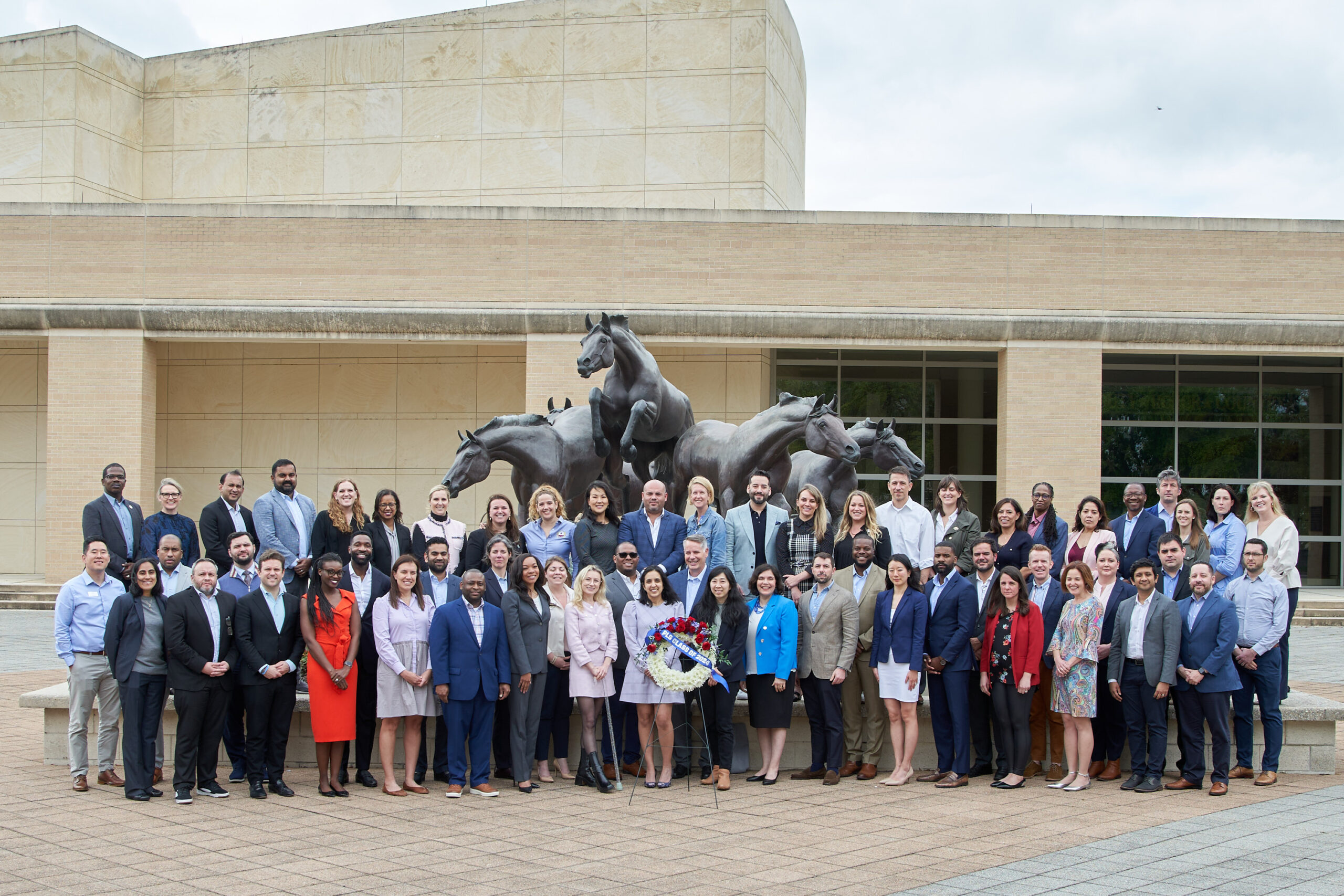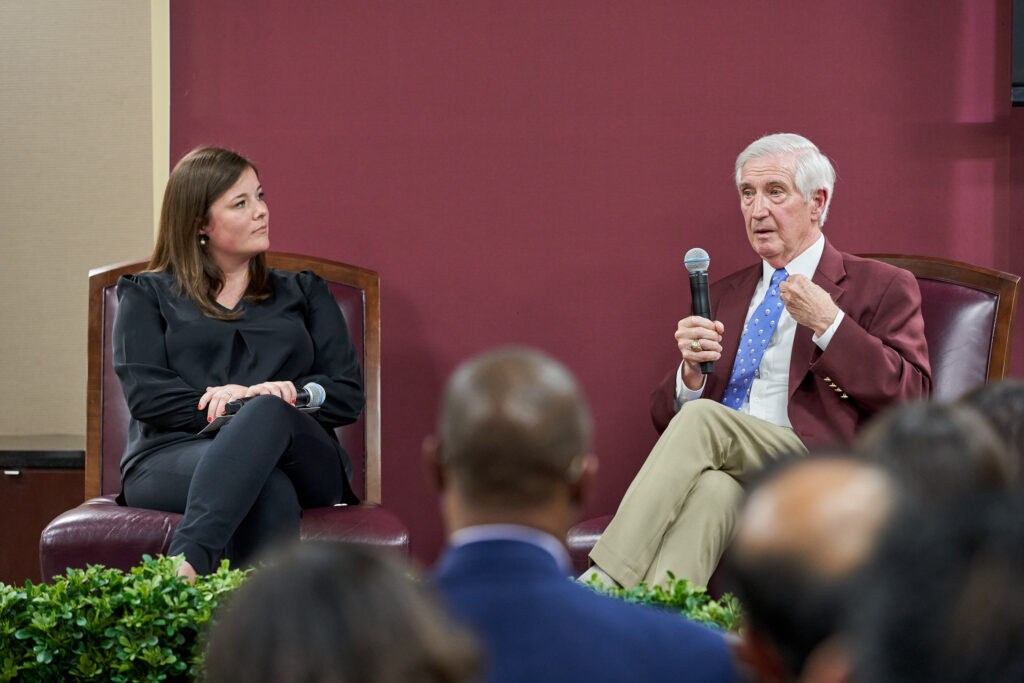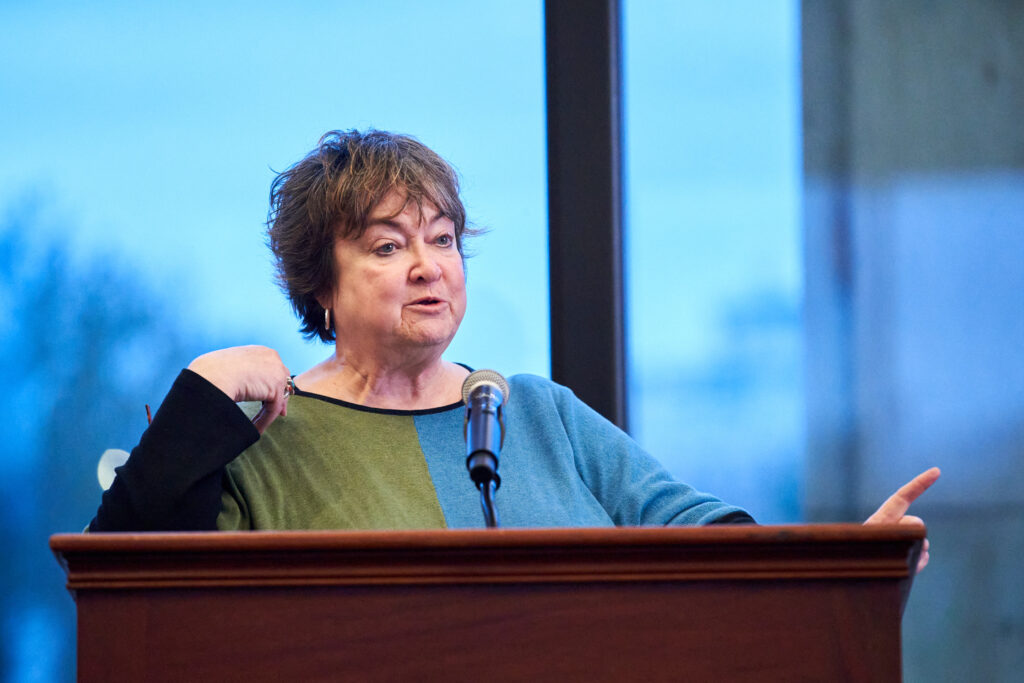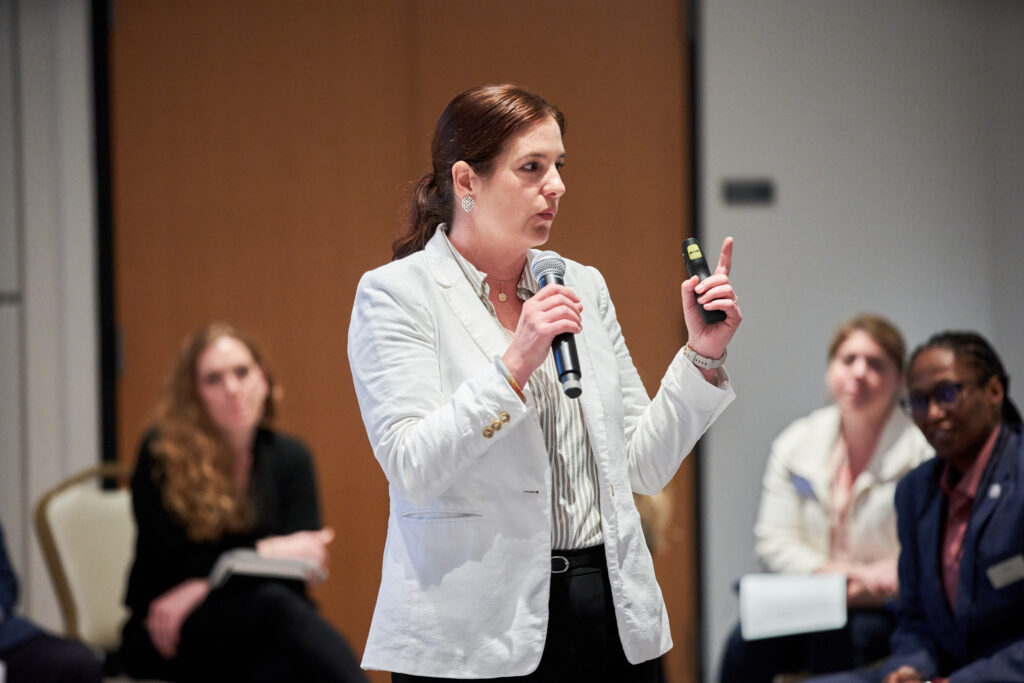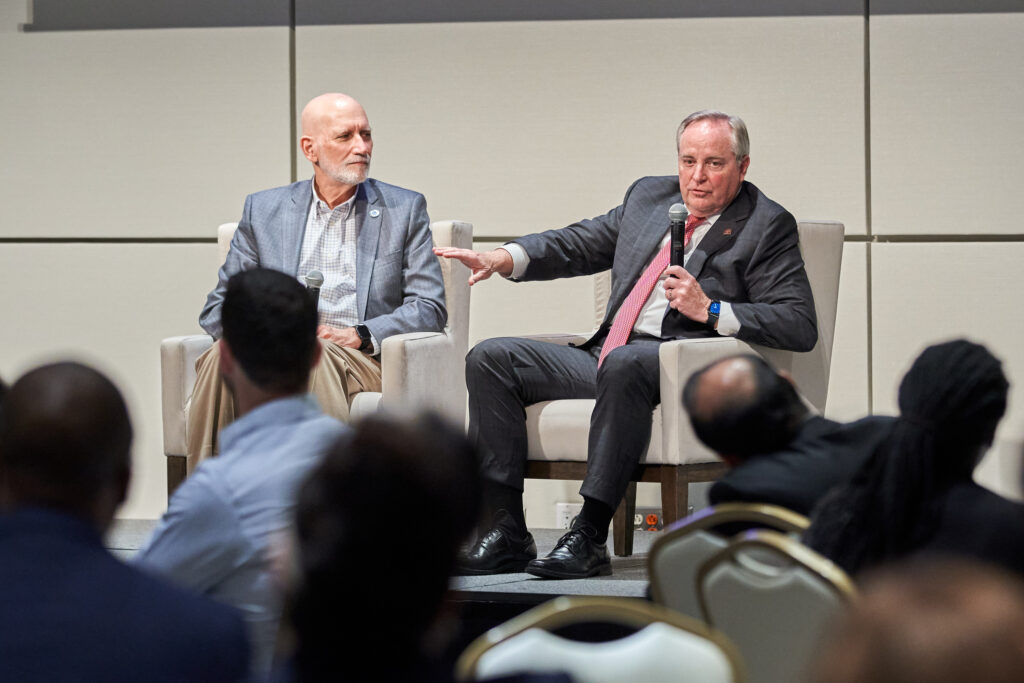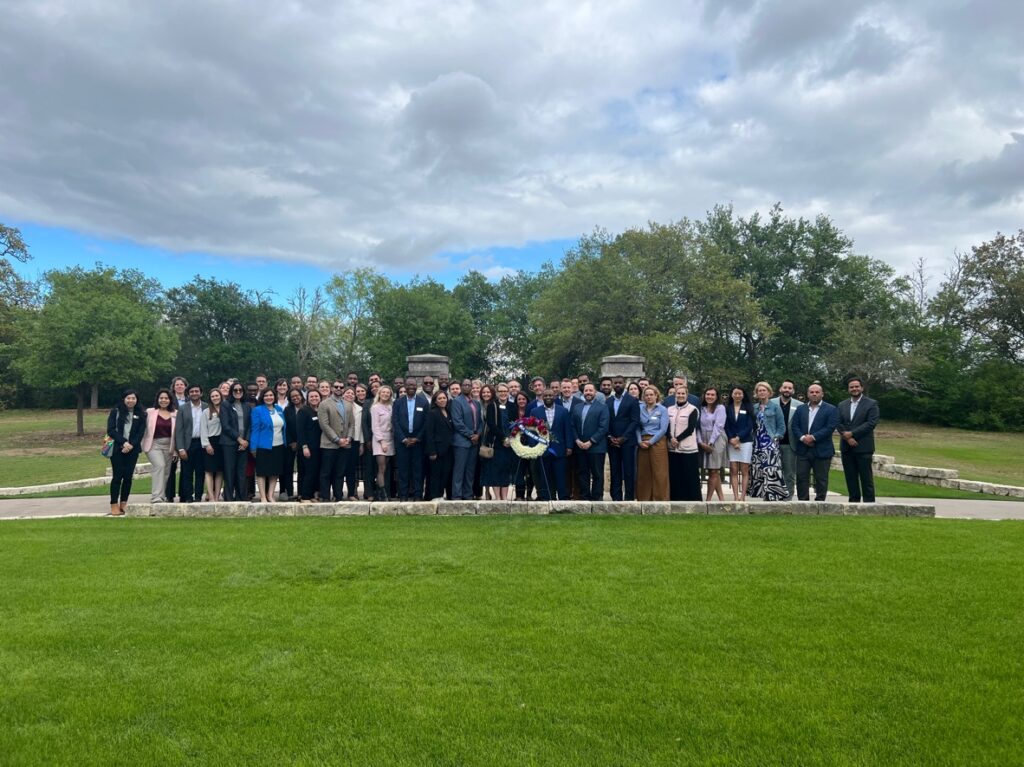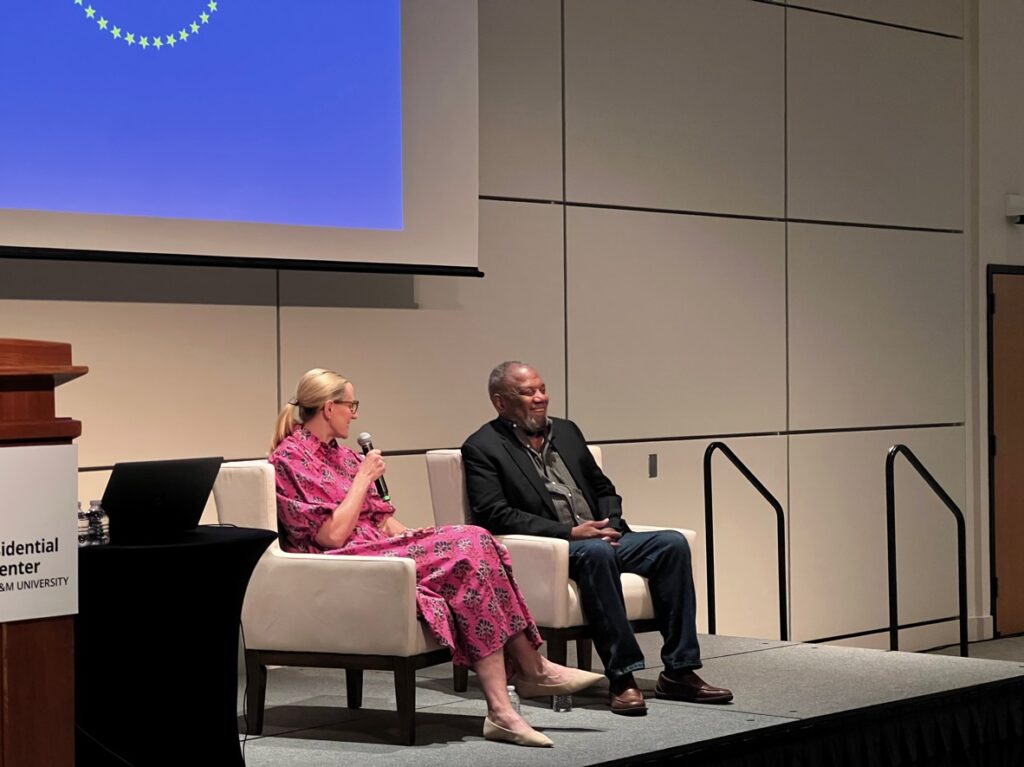2023 Presidential Leadership Scholar Steve Smith, President and CEO of Airlink, shares how his organization delivers critical aid and hope to millions of people around the world and discusses the power of the network gained through PLS .
Please tell us a little bit about yourself and your personal leadership project.
I was born and raised in the English county of Somerset and originally came to the United States on a golf scholarship to Mars Hill University in North Carolina. In my first year, I won Freshman of the Year in the South Atlantic Conference, but after transferring to UNC Wilmington my junior year, I came to the realization that I was unlikely to take on Tiger Woods any time soon. He’ll always have my vote for GOAT! But, more importantly, I met my amazing wife at UNCW on the MLK weekend of Y2K. We’ve now been married for over 24 years and have three wonderful children. The British accent doesn’t really work on her any longer … but, at least my 2023 PLS cohort appreciated it during our final celebration in Module Six as they were handing out superlatives!
I am a people person at heart, and I genuinely enjoy engaging with others. And so, it is perhaps inevitable that I should work in a sector that is all about people. I am the President and CEO of a disaster response nonprofit called Airlink. Using in-kind donations from the airlines and cash donations from the public, Airlink transports disaster responders and humanitarian aid free of charge across the globe for a network of over 200 vetted NGOs. Our mission is to ensure the costs of transport are not a barrier to NGOs responding to disasters. I first joined the organization over 10 years ago, when it was little more than an idea conceived by a few executives running aircraft leasing companies. We have since grown to become a multimillion-dollar nonprofit delivering critical aid and hope to millions of people a year globally.
My personal leadership project was focused on growing Airlink’s regional humanitarian aid response network, with particular emphasis on the Asia-Pacific region. Disaster response requires cooperation and coordination from a number of sectors and multiple organizations – national and sometimes international. Unfortunately, the sector is deeply fragmented, and actors often end up competing instead of cooperating.
There are two statistics I want you to keep in mind: Firstly, 73% of the cost of an aid program is accounted for by supply chain management, of which transport is a substantial and highly cost-volatile part. Secondly, 60% of the humanitarian aid sent in the aftermath of a disaster is either the wrong items, or sent at the wrong time – it is eventually destroyed at the expense of the receiving country. Airlink’s model works to overcome these two systemic issues.
Building partnerships encompassing the private and philanthropic sectors and civil society are critical, not only for getting aid to people, but also for getting the right aid to them at the right times. However, for these partnerships to be most impactful – saving time and therefore saving lives – they ideally need to be formed and coordinated far in advance of a disaster striking. Every year, we experience disasters of ever greater complexity and intensity – for reasons of climate change as well as geopolitical tensions. One of the key geographies we focus on is the Asia-Pacific region. It is increasingly suffering from the effects of climate change, while at the same time being a deeply diverse region, with diverse populations spread across a vast area, many of which are located on hundreds of islands, limiting transport options. So, building effective alliances is critical. I’m pleased to say we are making progress; we have taken on local airline partners like Cebu Pacific and Malaysia Airlines and deepened relations with past partners like Cathay Pacific. We’ve also been running regional workshops bringing together local NGOs, regionwide bodies, and some funding partners to build that core of collaborators that can be actioned when needed. It is a slow process, and we must be sensitive to local needs. Airlink believes that supporting communities’ needs isn’t something done to people but done in harmony with local people, fulfilling their priorities. Fortunately, I have a great team out there making all of this magic happen!
Please give us an update on what you have been working on since completing the Presidential Leadership Scholars program.
Airlink’s most current high-profile response, and one of our most complex, is the conflict in the Middle East and supporting humanitarian needs across the region that result from that. As a humanitarian NGO, we adhere to four core principles: humanity, neutrality, impartiality and independence. These principles, rooted in international humanitarian law, have been embraced by the United Nations through General Assembly Resolutions 46/182 and 58/114.
So far, we have moved aid to Gaza and Israel, overcoming deeply complex logistical hurdles, which include a shortage of airline connectivity and capacity, backlogs and logjams at key airports and border crossings, and requirements for humanitarian actors to be vetted and approved by multiple governments prior to aid movements. On top of this, after two years of war in Ukraine and the COVID pandemic before that, fundraising challenges -for all NGOs- are significant.
But, to date, Airlink has coordinated transportation for over 120 tons of critically needed relief supplies to support the needs in the region in partnership with 11 nonprofit organizations. So far, we have supported the movement of medicines, medical supplies, shelter items, durable medical equipment, and water, sanitation, and hygiene (WASH) kits delivered to emergency response programs supporting emergency needs in Gaza, displaced populations in nearby countries, and regional cargo pre-positioning.
In addition to the movement of humanitarian cargo, Airlink has secured passenger travel for more than 50 humanitarian personnel to support projects across the region, providing emergency medical and mental health care, coordination surge capacity, aid distribution, assessment expertise, and additional specialties. The generous support of Airlink’s airline, logistics, and funding partners has made these operations possible and has allowed us to reach 800,000 people in need.
One of our most impressive cargo movements was a chartered flight to fly a Hospitainer to Gaza in partnership with our NGO partner, International Medical Corp (IMC). A Hospitainer -essentially a hospital in a can- is an incredibly impressive piece of kit that is manufactured in the Netherlands and comprises interchangeable medical modules made from shipping containers; depending on their configuration, these units provide ready-made hospitals that can provide surgical care, maternal care, diagnostics, facilities for infectious disease, etc. Airlink has now sent three units in total, and they are serving tens of thousands of people.
Airlink currently has partnerships with more than 50 commercial and charter airlines and more than 130 international NGOs. Which lessons learned on strategic partnerships during the Presidential Leadership Scholars program have stayed with you the most, and how have you put those lessons into action?
I’m reminded of Mike Hemphill’s sessions on TRIZ (Theory of Inventive Problem Solving) and the creative art of destruction – i.e., reverse engineering the problem to figure out what not to do! While many will say that forming partnerships in the midst of a humanitarian crisis isn’t ideal and that you should pursue partnership when things aren’t as heated, the irony is that many organizations aren’t either open, nor do they share the same objectives as you until the “spike” event occurs. Remaining flexible, being open to partnering around shared objectives is tremendously powerful. Of course, Airlink does have and focuses on strategic partners that always show up, but the world is a big place, and during every response we need to remain open to forging new partnerships that can help deliver aid and relief quickly.
PLS also reminded me of the value of sharing problems with as wide a group of people as possible and that ideas spring from that openness. Those ideas can be things or ways of looking at things that you’ve never thought about before. Being a leader is not about having all the ideas or all the answers. A critical element of successful leadership and being a successful leader is about having as wide and interesting a network as possible. Your power is your network; the most empowered leaders are those with the most diverse networks. The PLS alumni make my network stronger.
What is the most pressing need you are seeing in the humanitarian aid system right now, and what do you see as Airlink’s role in addressing that challenge?
The single biggest issue facing both Airlink and the humanitarian sector is funding. There are 32 active civil conflicts today, and 117 million people have been displaced – over half of them within their own borders. Additionally, 363 million people globally are in need of humanitarian support, and 333 million people are facing acute levels of food insecurity. Only about two-thirds of the $55.2 billion in needed funding has been raised. Simply put, demand is outpacing capacity and has been for a number of years. The drivers for this predicament are COVID-19 – j which undid years of development funding – ongoing conflicts, a seemingly more fractious geopolitical situation, and climate change.
I am convinced that we need a different approach, we need market-based approaches, and we need the private sector to engage. Airlink – by our model and through our airline and aviation sector – and donors and partners are showing the way. And we spend a great deal of time telling that story and helping businesses understand how they can get involved in an effective way.
Returning to the aforementioned statistics, 60% and 73% are important. If, as the evidence suggests, 60% of aid isn’t needed by the time it arrives, you can see why companies might be reluctant to get involved and worry they might do the wrong thing instead of the right things. But by vetting NGOs, ensuring that aid meets locally identified needs and that local distribution is part of an aid program, you can overcome many problems and avoid the waste.
If you take that figure of 73% of program cost being supply chain management, imagine if all the companies in the supply chain – from warehousing and insurance to transport – were active donors (in-kind or cash). Then you could cover that cost base, which would be the equivalent of a near three-quarters increase in aid budgets. That’s the message we are taking to the wider public, and much of that is based on getting NGOs and funding bodies, like foundations, to understand that logistics is a critical part of disaster response and should be thought about and funded accordingly. At the moment, it is an afterthought; that’s often why and when NGOs come to Airlink … but there is only one of us!
Do you have a favorite success story that illustrates Airlink’s impact?
Every response leaves a mark and impacts you, but Airlink’s Ukraine response is our largest response to date and was a multiyear, multiorganization, multicountry response. Not only am I immensely proud of my team and the number of people we helped, but also, as a model for cooperation between the private sector, philanthropic sector, and civil society, it was exemplary. I should add that I am tremendously grateful to all of Airlink’s donors and supporters; we couldn’t have done any of this without them.
Over two years, Airlink delivered 2,382 tons of humanitarian aid (delivered across 320 cargo shipments) and provided free flights to 1,106 responders in support of 66 NGOs. In total, Airlink has directly helped over 6.2 million people, including those in Ukraine and displaced Ukrainians in Hungary, Moldova, Poland, and Romania.
Of course, those figures don’t tell the story of each individual aid program and the countless on-the-ground volunteers and aid workers behind them. One such example you can view here. This was one of two air bridges Airlink established. In the case of our partnership with NGO GlobalMedic and donors Flexport.org and Air Canada, we established an air bridge that has been running for just over two years. To date, Airlink and our partners have delivered 53,000 Family Emergency Kits through this air bridge. These kits are an ingenious and cost-effective means to provide displaced families with clean drinking water. Consisting of a plastic bucket and a ceramic water filter (in addition to some personal hygiene items), this simple solution means the difference between life and death. It greatly contributes to preventing waterborne disease outbreaks, which can turn disasters into lethal populationwide pandemics. In the aftermath of any disaster, providing clean drinking water is critical.
All of this is made the more remarkable by the fact that while responding to Ukraine, we were simultaneously responding to disasters in sub-Saharan Africa, the Middle East, Latin America, and the Caribbean as well as North America. Not bad for a team of only 18 people. I am understandably immensely proud of my team.
